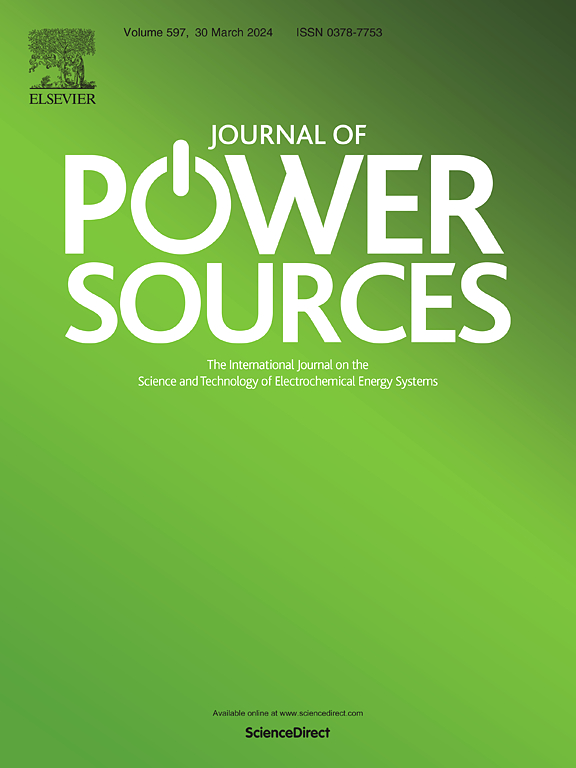Effect of indium content on the discharge properties of Al-Mg-Ga based anodes in neutral Al-air batteries
IF 8.1
2区 工程技术
Q1 CHEMISTRY, PHYSICAL
引用次数: 0
Abstract
The effects of varying In concentrations on the electrochemical and discharge performance of Al-0.5 Mg-xIn-0.05Ga (x = 0.4, 0.2, 0.1, 0.05 wt%) alloy anodes in a 2M NaCl neutral electrolyte have been systematically investigated in this study. It is found that an appropriate In content (0.1–0.2 wt%) enhances discharge performance by reducing localized corrosion associated with Ga and promoting intragranular segregation, which facilitates uniform anodic dissolution and improves overall anodic utilization. In contrast, excessive In (≥0.4 wt%) leads to significant segregation of In at the grain boundaries, resulting in severe intergranular corrosion of the alloy. Moreover, it also significantly hinders charge transfer, with the discharge products of In forming a layer on the electrode surface, thereby obstructing the dissolution of Al, both contributing to a decline in discharge performance. Furthermore, the increase in In concentration shifts the dominant diffusion mechanism from Al3+ to In3+, considerably affecting the mass transfer between the electrode surface and the electrolyte. Alloy 3 (Al-0.5Mg-0.1In-0.05Ga) demonstrating the best performance at a current density of 5 mA cm−2, achieving an energy density of 3454.44 Wh kg⁻1, a working voltage of 1.291V, and an anodic utilization rate of 93.22 %. This work provides valuable insights for the development of high-performance neutral Al-air batteries.

求助全文
约1分钟内获得全文
求助全文
来源期刊

Journal of Power Sources
工程技术-电化学
CiteScore
16.40
自引率
6.50%
发文量
1249
审稿时长
36 days
期刊介绍:
The Journal of Power Sources is a publication catering to researchers and technologists interested in various aspects of the science, technology, and applications of electrochemical power sources. It covers original research and reviews on primary and secondary batteries, fuel cells, supercapacitors, and photo-electrochemical cells.
Topics considered include the research, development and applications of nanomaterials and novel componentry for these devices. Examples of applications of these electrochemical power sources include:
• Portable electronics
• Electric and Hybrid Electric Vehicles
• Uninterruptible Power Supply (UPS) systems
• Storage of renewable energy
• Satellites and deep space probes
• Boats and ships, drones and aircrafts
• Wearable energy storage systems
 求助内容:
求助内容: 应助结果提醒方式:
应助结果提醒方式:


